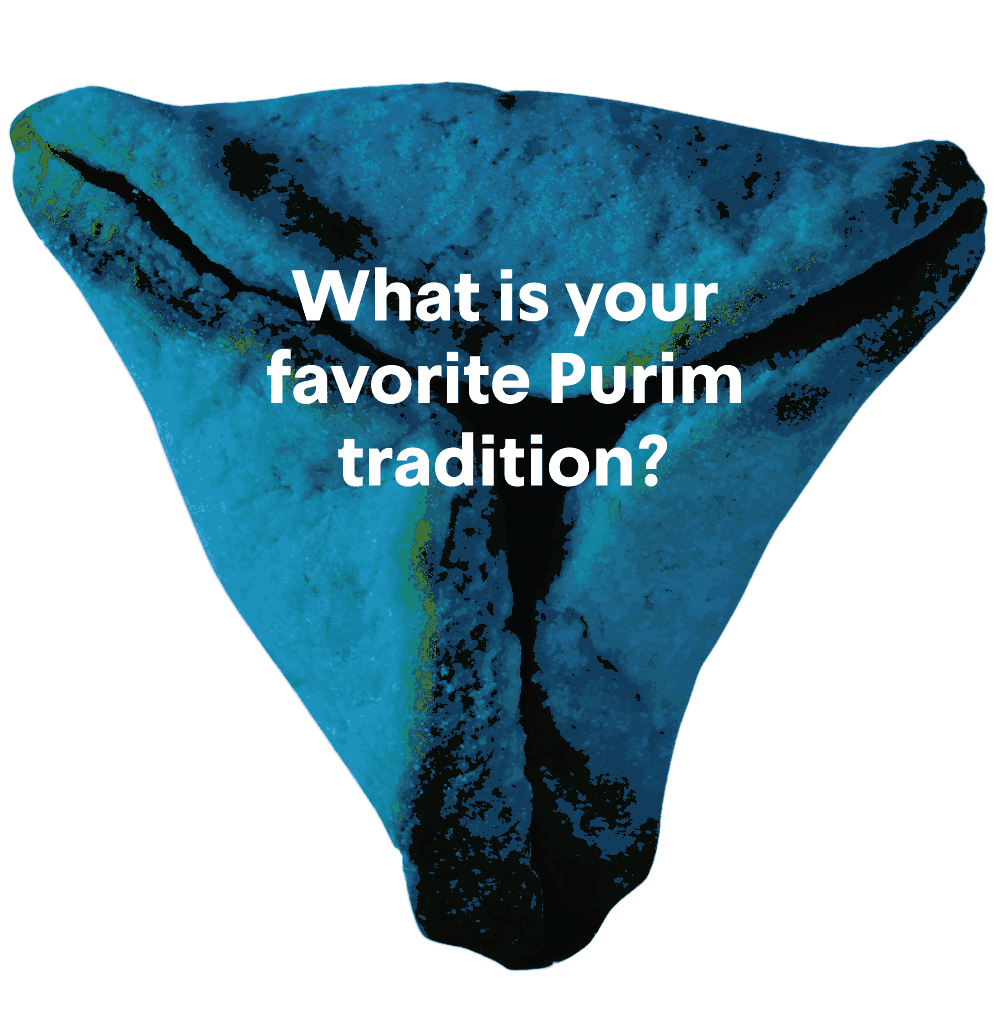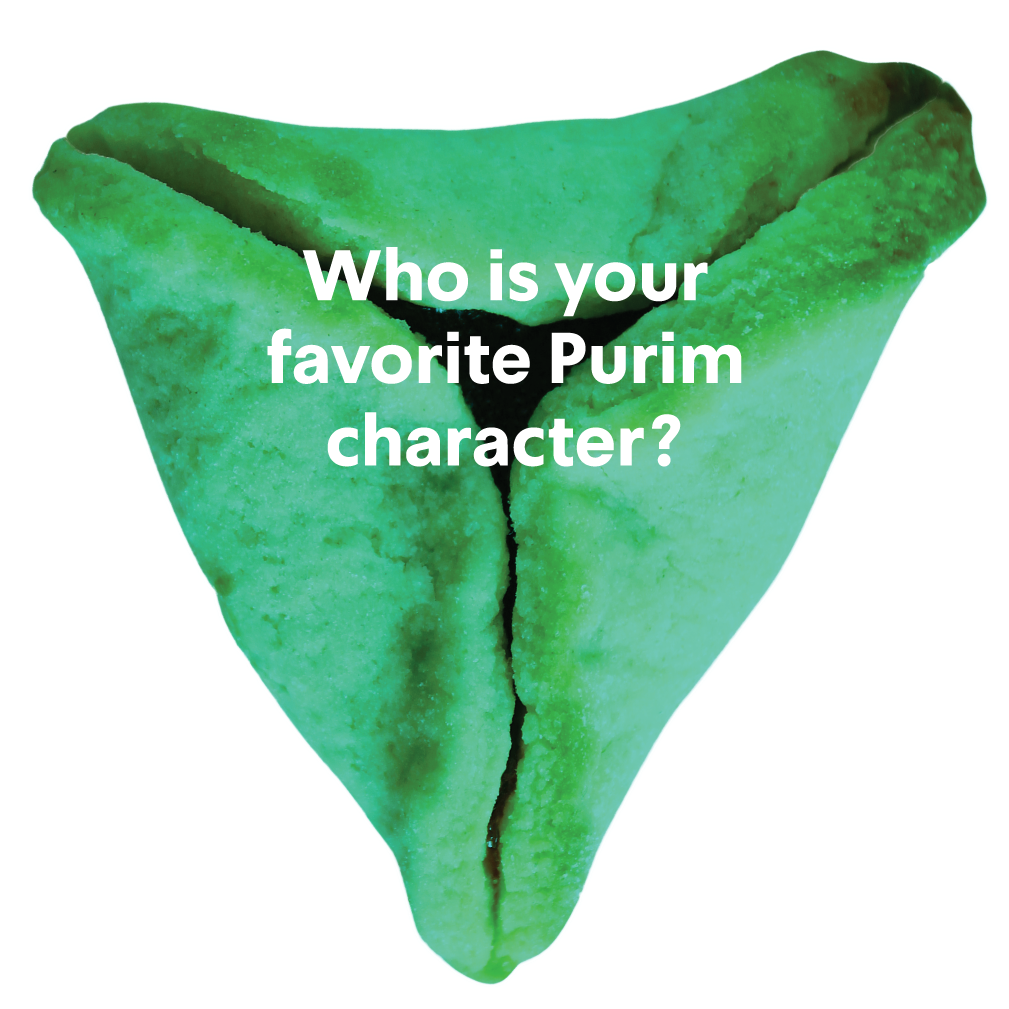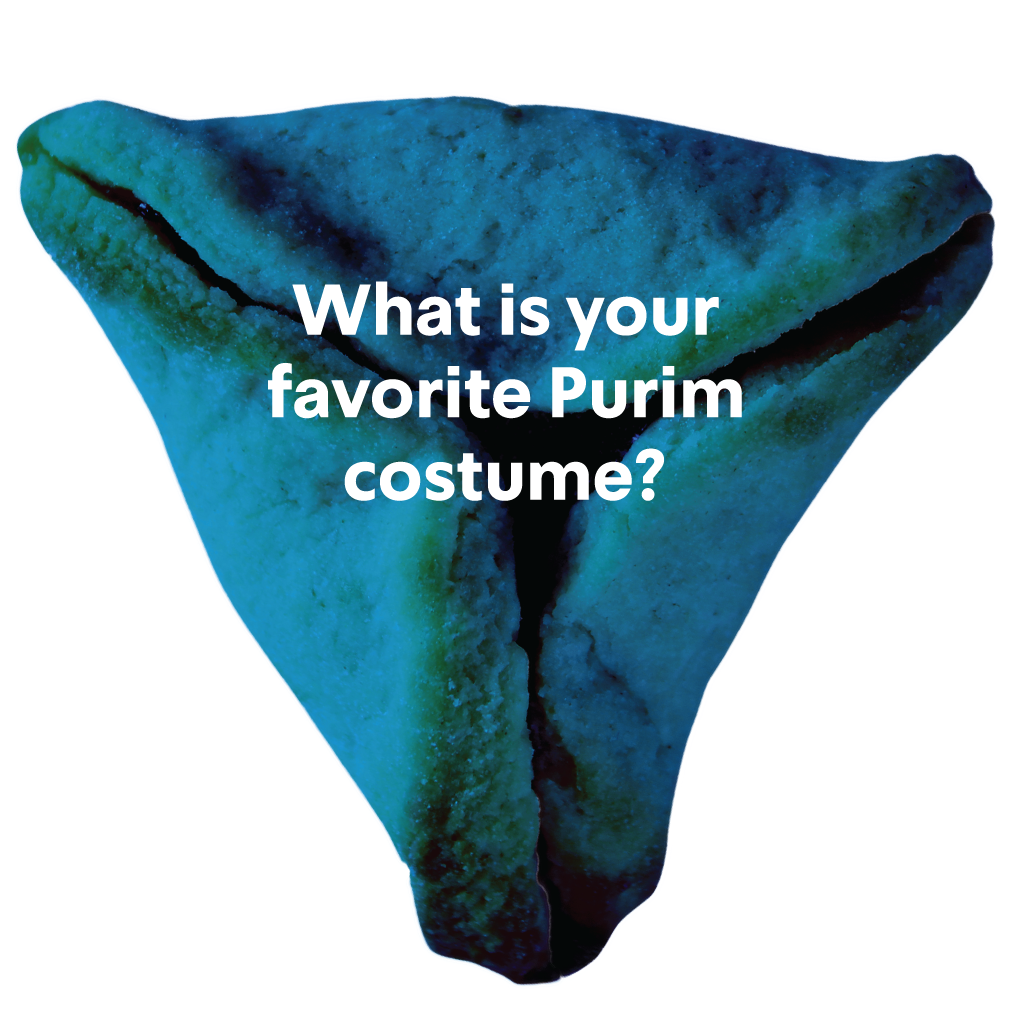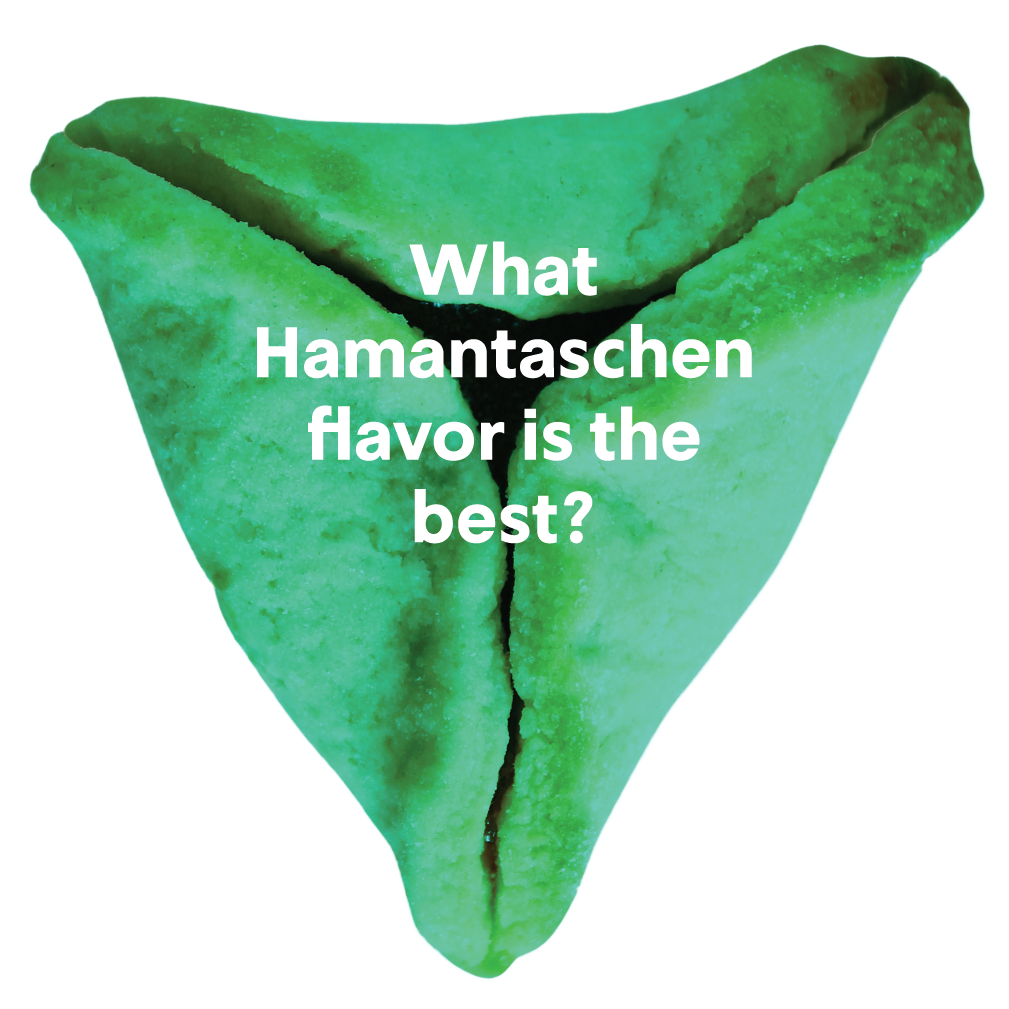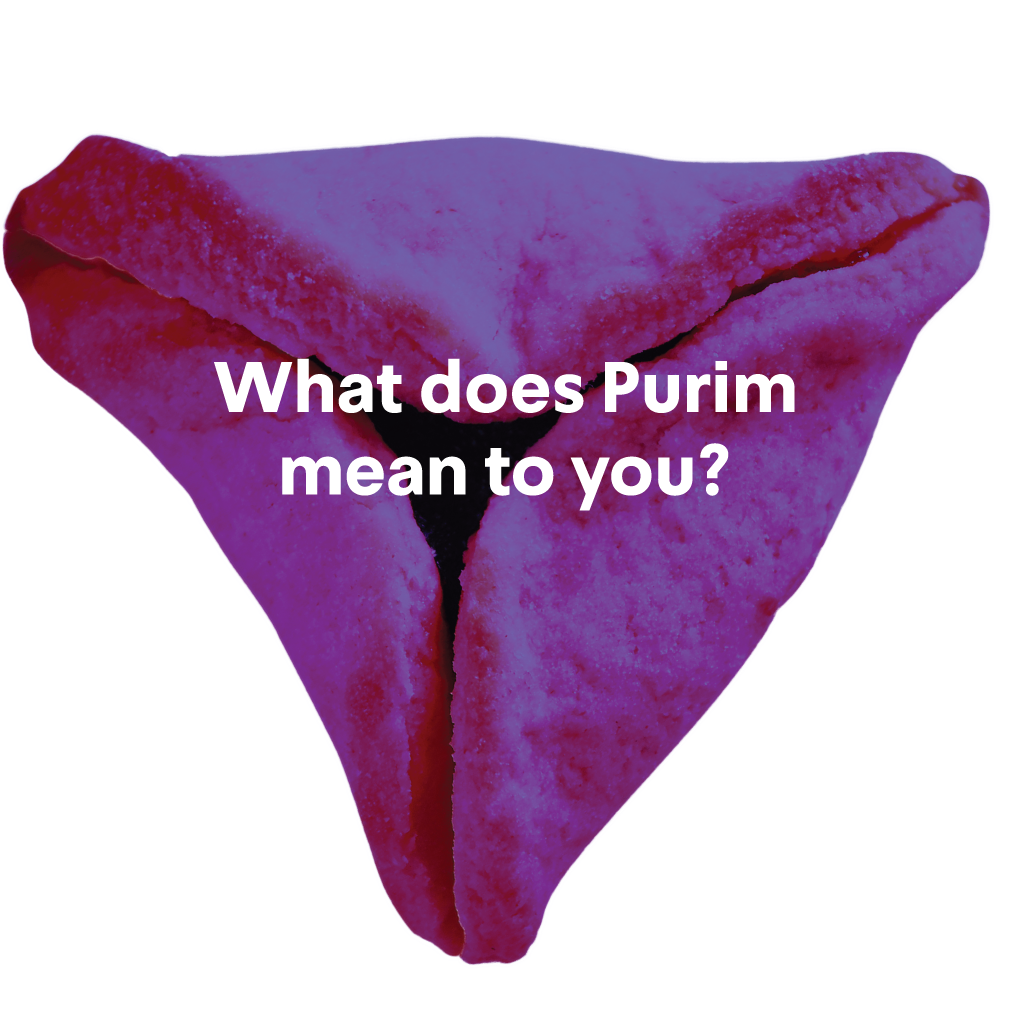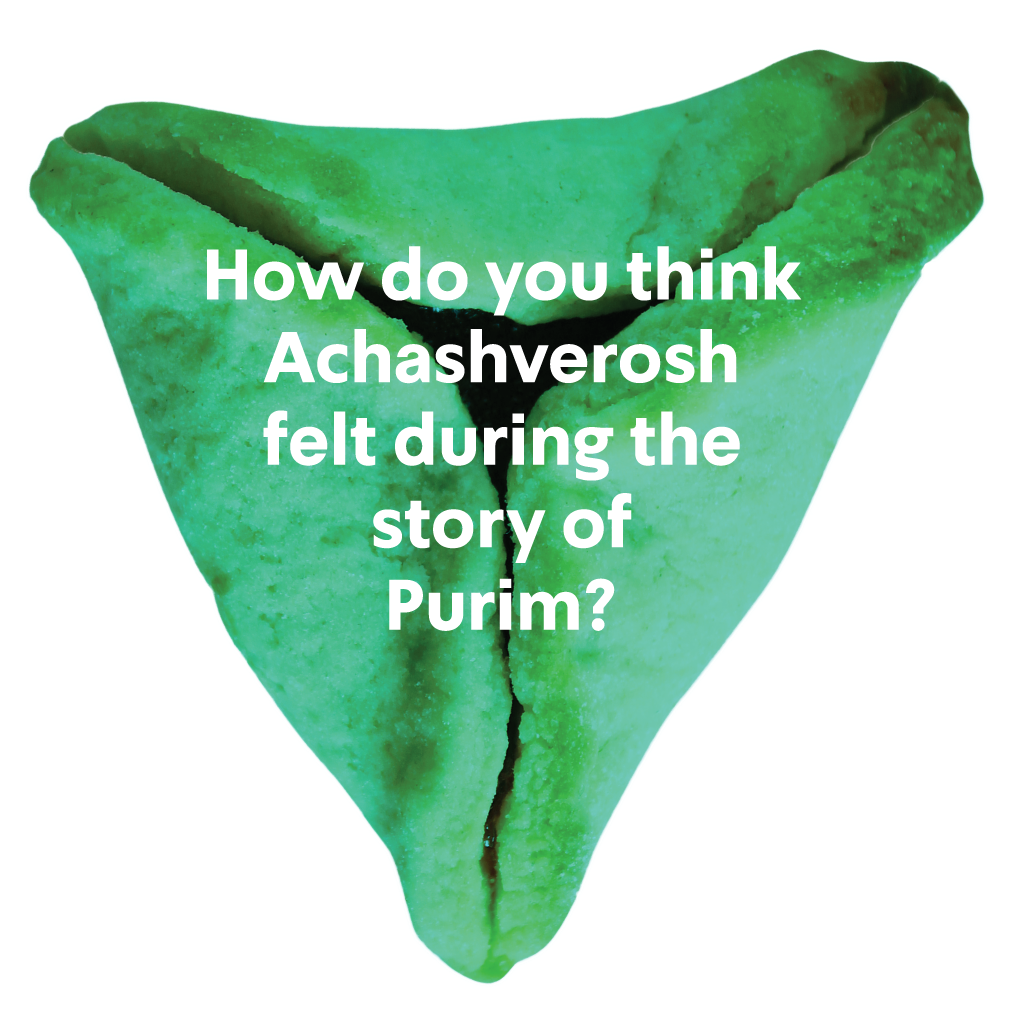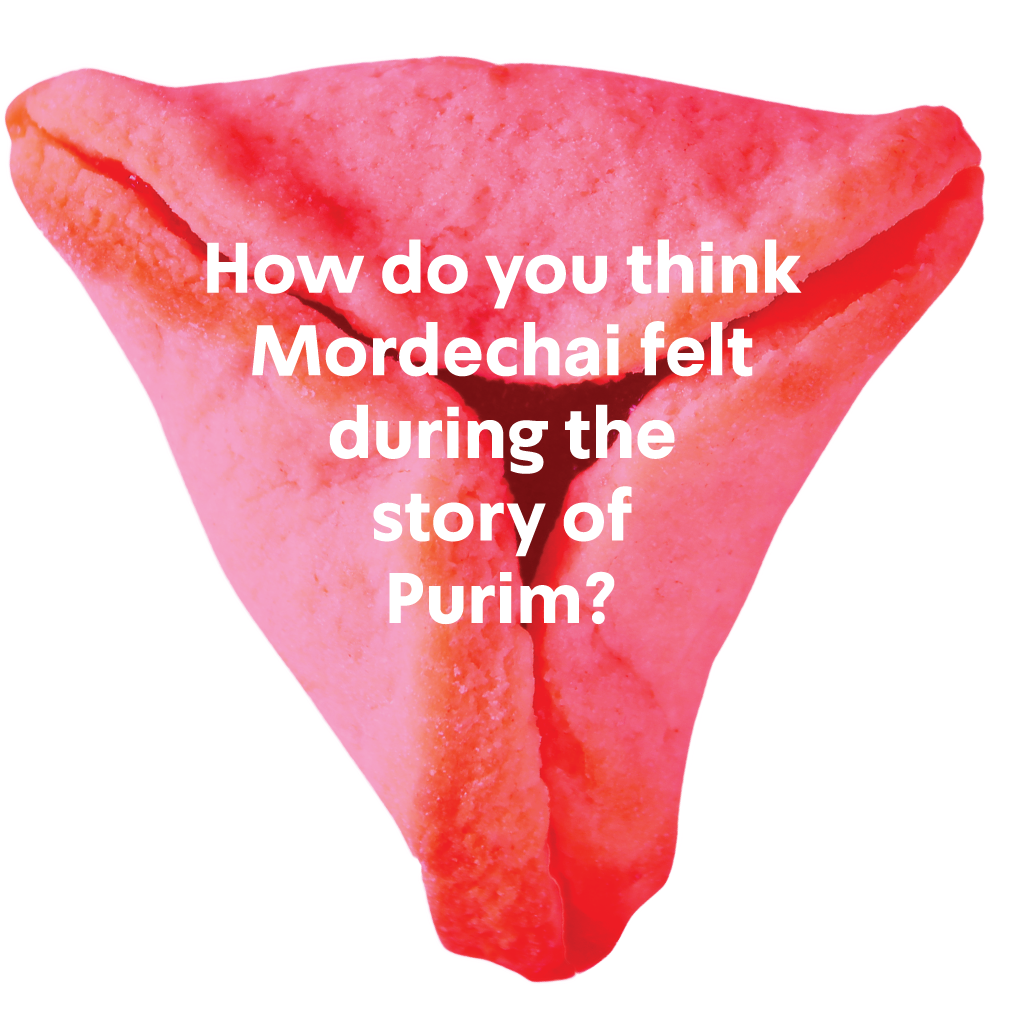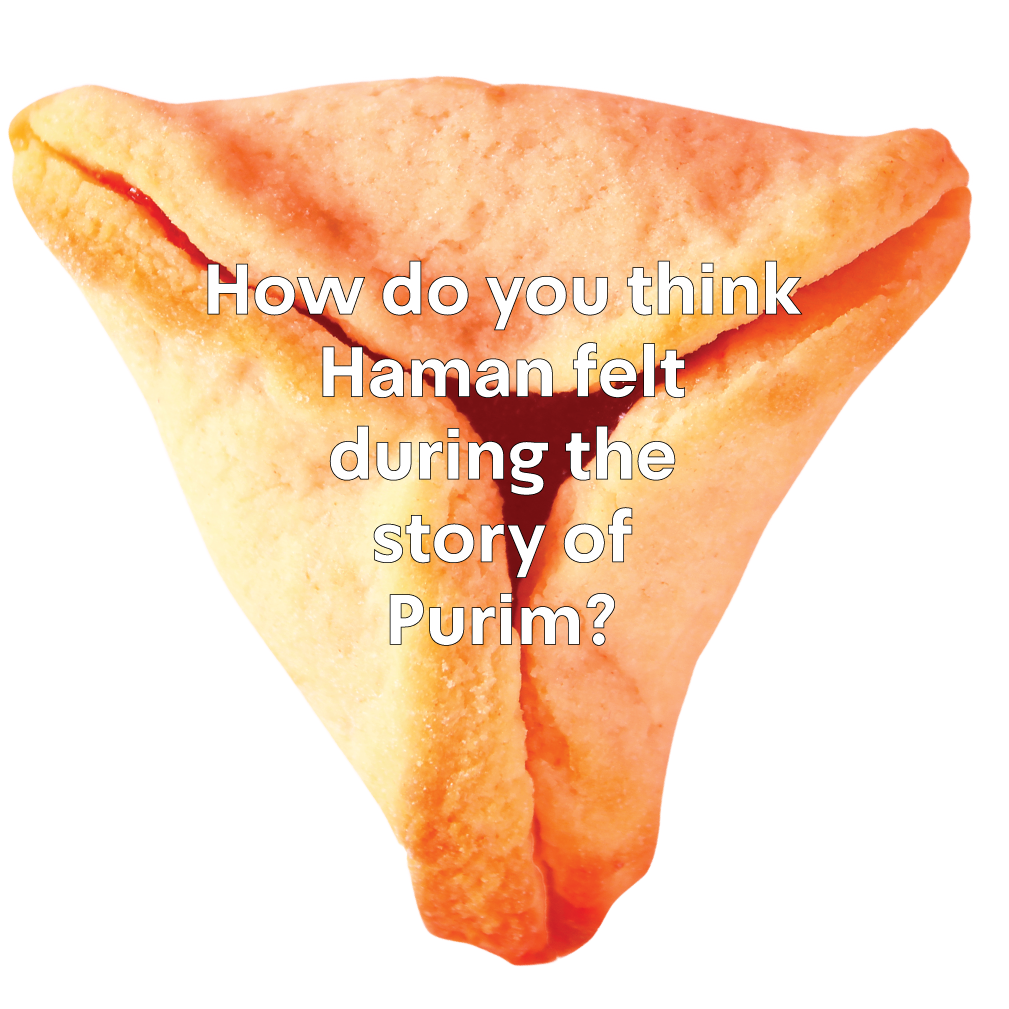House of Hamantaschen
Interlock these cards together to build a sculptural centerpiece. Then, use the questions to launch a conversation about Purim characters, memories, and customs.
Looking for answers?
To better facilitate conversation, these questions are purposefully open ended. In fact, you could say these hamantaschen cookies are just food for thought! To help jumpstart your conversation at home, you can check out or ideas for each question below.
What is your favorite Purim tradition?
Purim is full of exciting traditions. It is customary to dress up in costumes, bake hamantaschen cookies, make noise with a grogger, read the story of Purim, share baskets of goodies with friends, and to give charity. Do you feel a personal connection with any of these customs?
Who is your favorite Purim character?
The Purim story is full of interesting characters! Here are the main figures:
King Achashverosh: In the story, Achashverosh was the reigning king. He loved to party and was a bit distracted from his duties as a ruler.
Queen Vashti: At the beginning of the story, Queen Vashti is dethroned by King Achashverosh. She is depicted as a strong character with firm beliefs.
Queen Esther: After winning a beauty competition, Esther becomes the Queen. She is kind, wise, and brave. She stands up to save the Jewish people.
Mordechai: In the story, Mordechai is an honest individual with a strong sense of identity. He helps Esther with patience and understanding.
Haman: In the story, Haman was the advisor to King Achashverosh. He is motivated by power and a fear of the unknown.
Why do you think we give gifts on Purim?
On Purim, we give baskets of goodies to friends and family. This is known as Mishloach Manot, or the sending of portions.
Some suggest that we send Mishloach Manot to make sure everybody can enjoy a festive meal to celebrate Purim. Others believe that we gift Mishaloch Manot to demonstrate how the Jewish community is strong and interconnected. What do you think?
You can read more about this tradition here.
Why do you think we give charity on Purim?
On this holiday, there is a tradition of giving gifts to the poor. This is called Mattanot La'evyonim. Some suggest that we engage in this practice on Purim specifically so we do not forget the needs of the less fortunate while we celebrate. What do you think?
You can learn more about the traditions of giving on Purim with this video.
Why do you think we dress up on Purim?
There are many theories about this ancient tradition. The act of masquerading is related to several themes in the story of Purim. In fact, even the name “Esther” means “hidden” in Hebrew.
Curious about some other interpretations? Check out this brief article.
What is your favorite Purim costume?
Do any special costume memories come to mind? If you’ve never dressed up for Purim before, who would you like to masquerade as for a day?
What Hamantaschen flavor is the best?
This question can spark a big debate among cookie enthusiasts! Some of the most classic flavors are poppyseed, apricot, and chocolate. But does that make them the best? What do you think?
What do costumes represent to you?
When you put on a costume, it can have different meanings. In your experience, does the act of putting on a disguise have any special meaning?
What do you remember most about Purim as a child?
Purim festivities are very exciting for children! From parties and carnivals to baking treats and sweets, do you have any fun memories of the holiday?
What does Purim mean to you?
Purim is a holiday that is very fun and complex at the same time. For a literal definition, the word “Purim” means “lottery.” Does it mean anything else to you and your community?
How do you think Esther felt during the story of Purim?
We encourage you to read the story of Purim in Chapter 1 of your guide and think about the events from her perspective. Based on our reading, we think Esther experienced a wide range of emotions including courage, uncertainty, concern, and responsibility.
How do you think Achashverosh felt during the story of Purim?
We encourage you to read the story of Purim in Chapter 1 of your guide and think about the events from his perspective. Based on our reading, we think King Achashverosh experienced a wide range of emotions including foolishness, self-interest, gratitude, and remorse.
How do you think Mordechai felt during the story of Purim?
We encourage you to read the story of Purim in Chapter 1 of your guide and think about the events from his perspective. Based on our reading, we think Mordechai experienced a wide range of emotions including a sense of responsibility, devotion, concern, and motivation.
How do you think Haman felt during the story of Purim?
We encourage you to read the story of Purim in Chapter 1 of your guide and think about the events from his perspective. Based on our reading, we think Haman experienced a wide range of emotions including fear, worry, anger, and power.

